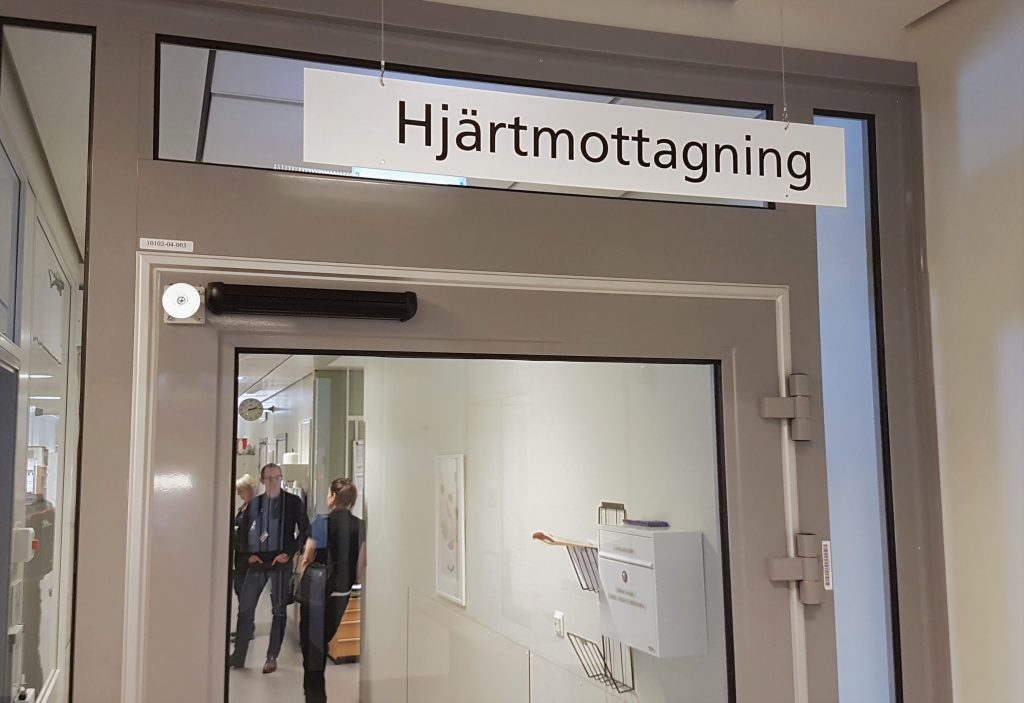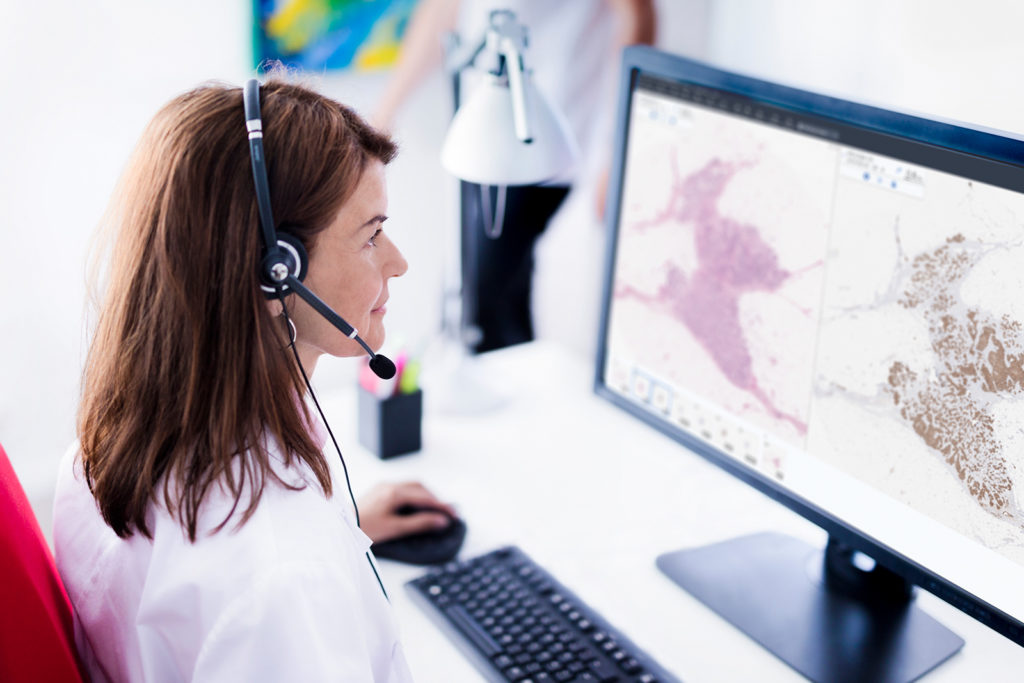Expanded roll-out and visions for the future
Additional disciplines and departments are now ready to install the platform for their multimedia. “It’s not the technology that is limiting us. As I said, it’s about getting the information out about the possibilities available,” says Marie. She also explains that many departments are often pleasantly surprised at being able to use the platform, and that most of them are positive towards starting to use it.
Several pilot projects are currently ongoing—for example, in speech-language pathology, where sound clips are saved and can be accessed directly through the EMR. In pathology, discussions have begun concerning image lifetime management, which will be necessary when cytology is digitized due to the large amount of data. At that point, certain functions will need to be applied to either erase clinically irrelevant data or compress the examination. In the not-too-distant future, the plan is for molecular biology to start storing patient data in the platform as well.
Patient-generated data
A particularly exciting area is meeting the increased demand for utilizing patient-generated data, an area where Region Värmland has several activities under way. Many of the hospital’s departments have requested a function to allow patients to save images that they have taken themselves with their phones, something that will be possible in the near future.
“The challenge with saving patient-generated data isn’t about the technology, but about guaranteeing its quality,” says Hans-Ulrik Stark, Chief Physician at the Dermatology Department at Central Hospital of Karlstad. “We’ll most likely let a specialist be a ‘gate-keeper’ and approve the image before it’s saved in the system.”
Mobile devices
Using mobile devices, primary care and outpatient facilities can handle a larger number of cases, taking pressure off specialists and reducing the number of unnecessary patient visits. For example, images and videos can be recorded using an app in a work phone, and tablets can be used to look at multimedia with the universal viewer. The application of mobile devices also makes it possible for specialists to use different apps to support their workflow—for example, when saving questionnaires, documents and multimedia in the EMR and making them accessible.
With the ongoing introduction of touchscreens in the healthcare sector, specialists are no longer tied to a specific workplace, but can instead provide diagnoses and opinions in a more flexible manner. Mobile devices have also proven valuable from a pedagogical perspective when explaining things to and engaging patients.
Patient access to multimedia
Something that Region Värmland noticed early on was that patients increasingly want access to their medical images. Plans are in place to offer this service in a portal that will be integrated with the national healthcare e-service 1177 Vårdkontakter. Various portals are still being evaluated, including Sectra’s Image Exchange Portal (IEP), to determine which one will be used.
Giving patients access to their examinations would offer major benefits to individuals in the form of increased involvement in their own care and the ability to bring clinical images to other healthcare providers—for example, for a second opinion. The limited possibilities for patient involvement has been stated as one of the major gaps in Swedish healthcare, a niche where enterprise imaging with connected patient portals can play a vital role.






